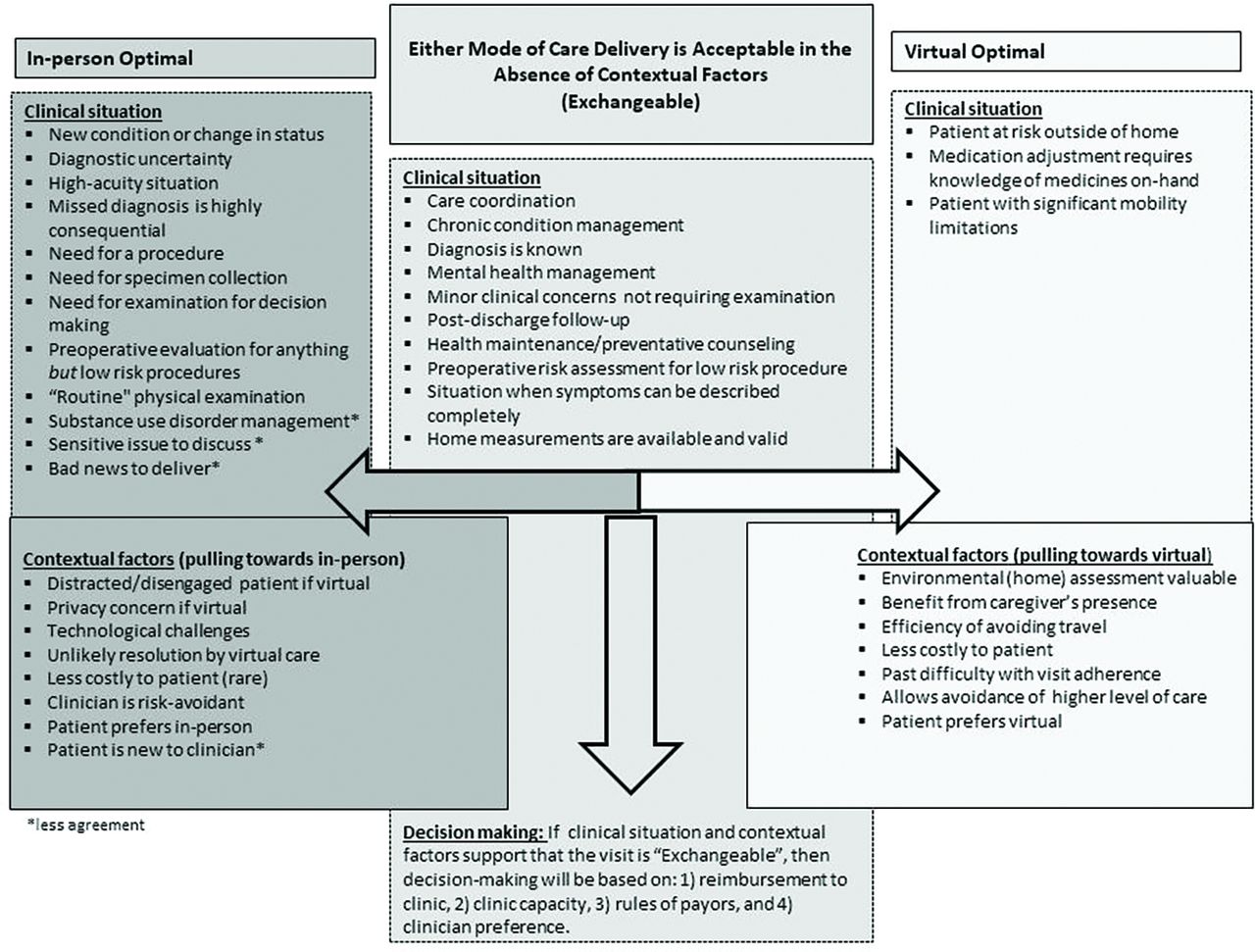Abstract
Background: Given the absence of guidelines for use of virtual visits for primary care delivery, a framework is needed to inform the most appropriate use of virtual visits.
Methods: We conducted in-depth, structured interviews of 18 patients, primary care clinicians, and other select informants. They were asked to discuss optimal, acceptable, and suboptimal uses of telemedicine for delivering care relative to in-person care delivery. The concepts expressed informed our development of a framework about appropriate use of virtual visits.
Results: The 103 concepts supported 5 main themes that emerged as a framework: clinical situations which are optimal for in-person care; situations optimal for virtual visits; situations that might be exchangeable between sites; contextual factors favoring in-person care; and contextual factors favoring virtual visits.
Conclusions: After further validation, we expect that this framework may guide future research and practice: it may be valuable for clinical practice redesign, for designing evaluations of the outcomes of virtual visits, for outcomes research, for patient education, for triage, and possibly for reimbursement considerations.

Citation
Segal, J. B., Davis, S., & Dukhanin, V. (2022). Working framework for appropriate use of virtual care in primary care. Journal of the American Board of Family Medicine, 35(3), 629-633. https://doi.org/10.3122/jabfm.2022.03.210469